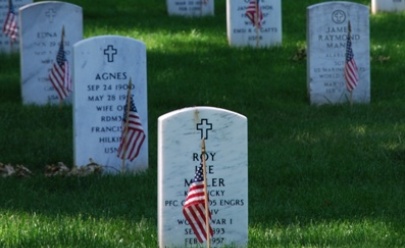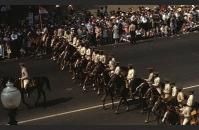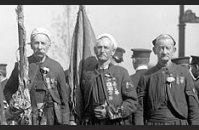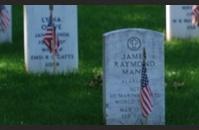MEMORIAL DAY AT A GLANCE:

Image Gallery
Facts About Memorial Day: A day of remembrance and honor for those who have died in our nation’s service
- Memorial Day was originally known as Decoration Day—a day when the graves of Civil War soldiers were cleaned and decorated. General John A. Logan of the Grand Army of the Republic first observed the holiday in 1868 when he declared, “the 30th of May, 1868, is designated for the purpose of… decorating the graves of comrades who died in defense of their country.”
- The 1868 celebration was inspired by previous observances of the day in towns across America. Several Northern and Southern cities claim to be the birthplace of Memorial Day. In 1966 the federal government declared Waterloo, New York, the official birthplace of Memorial Day.
- By the late 1800s, many American communities had begun to celebrate Memorial Day, and after World War I, observances began to honor those who had died in all of America’s wars.
- After World War I, the red poppy became synonymous with Memorial Day. All over the world people wear poppies or place them on graves to honor soldiers who died serving their nation during war.
- In 1971, Memorial Day was declared a national holiday to be celebrated the last Monday of every May.
- Most Americans are familiar with the major wars—the Revolutionary War, the War of 1812, the Mexican War, the Civil War, the Spanish-American War, WWI, WWII, the Korean War, the Vietnam War, the Persian Gulf War, and the Wars in Iraq and Afghanistan—but few think of those killed in "minor" conflicts. Examples of the lesser-known actions range from the Franco-American Naval War (1798-1800) to the tragedy of the USS Cole. No American death is too insignificant to remember when that life was lost in the service of one’s country.
- In December 2000, the “National Moment of Remembrance” resolution was passed in Congress. The resolution asks that at 3:00 p.m. local time, each Memorial Day, all Americans “voluntarily and informally observe in their own way a moment of remembrance and respect, pausing from whatever they are doing for a moment of silence or listening to Taps.”
- We can also commemorate Memorial Day by visiting cemeteries and placing flags or flowers on the graves of fallen heroes, by visiting war memorials, by flying the United States flag at half-staff, or by simply educating ourselves about the great sacrifices that so many soldiers made for their country and for the safety of the world.
Download a printable version of this At A Glance
Visit My Memorial Day, a site dedicated to honoring the soldiers who lost their lives in conflict.
TAKE ACTION:


EDUCATION PROJECTS:
Student Travel – WWII Educational Tours
High school and college students, learn the leadership principles that helped win WWII on a trip to France or during a weeklong residential program in New Orleans. College credit is available, and space is limited.
See You Next Year! HS Yearbooks from WWII
Collected from across the United States, the words and pictures of these yearbooks present a new opportunity to experience the many challenges, setbacks and triumphs of the war through the eyes of America’s youth.
The Victory Gardens of WWII
Visit the Classroom Victory Garden Project website to learn about food production during WWII, find lesson plans and activities for elementary students, get tips for starting your own garden and try out simple Victory Garden recipes!
The Science and Technology of WWII
Visit our new interactive website to learn about wartime technical and scientific advances that forever changed our world. Incorporates STEM principles to use in the classroom.
Kids Corner: Fun and Games!
Make your own propaganda posters, test your memory, solve puzzles and more! Learn about World War II and have fun at the same time.






